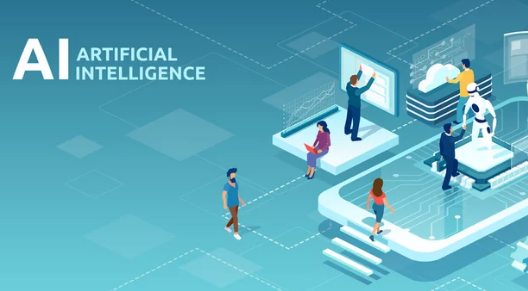Artificial Intelligence (AI) has become woven into the fabric of our daily lives. From personalized recommendations on Netflix and YouTube to voice assistants like Alexa and Siri, AI makes life easier, faster, and often more enjoyable. But beneath the surface of convenience lies a pressing issue: privacy. As we hand over data to power smarter systems, we must ask ourselves—what are we sacrificing in return?
This article explores the often-overlooked trade-off between AI-powered convenience and personal privacy, revealing how our data is collected, what it’s used for, and what we can do to protect our digital identities in an increasingly automated world.
1. The Invisible Transaction: Data for Service
Every time you ask a chatbot for directions, use facial recognition to unlock your phone, or let a streaming service “suggest what to watch,” you are engaging in a data transaction.
AI systems rely on vast amounts of data to function. That includes:
- Location history
- Voice recordings
- Browsing habits
- Purchase patterns
- Facial images
- Health metrics
While these inputs power helpful features, they also leave behind a trail of personal data—often stored, analyzed, and monetized by corporations or governments.
2. How AI Collects and Uses Your Data
AI is only as smart as the data it consumes. To personalize services, companies gather data through:
- Smart devices (IoT sensors, wearables)
- Apps and websites (tracking cookies, usage logs)
- Social media (likes, shares, comments, private messages)
- Public surveillance (CCTV with facial recognition)
This data is then used to:
- Train machine learning models
- Predict consumer behavior
- Automate decisions (like credit scoring or hiring)
- Customize marketing and content
The result? Smoother experiences for users—but also a loss of control over how their information is used and shared.
3. The Convenience Trap: Why We Accept Surveillance
We know we’re being watched, yet we still opt in. Why?
- Ease of Use: Logging in with biometrics is quicker than typing passwords
- Free Services: Apps offer functionality in exchange for data, not money
- Personalization: People prefer tailored content and recommendations
- Social Pressure: It’s hard to opt out when everyone else is opted in
This creates what privacy experts call the “convenience trap”—we give up privacy because the benefits are immediate, while the risks feel abstract or distant.
4. What’s at Stake? The Risks of Over-Sharing
Giving up data might seem harmless until something goes wrong. Here are real-world consequences of unchecked data collection:
Data Breaches
Hackers target AI-powered platforms that hold massive user datasets. Leaked personal data can lead to identity theft, fraud, and stalking.
Algorithmic Bias
AI trained on biased or incomplete data can make unfair decisions in hiring, lending, policing, and beyond—amplifying discrimination.
️ Surveillance Capitalism
Companies collect behavioral data to predict and influence decisions—raising concerns about manipulation, not just personalization.
⚖️ Erosion of Rights
As governments adopt AI for surveillance and security, there’s a risk of mass surveillance infringing on civil liberties without oversight.
5. AI in the Workplace: Privacy Under Pressure
Many companies now use AI to monitor employees:
- Tracking productivity via keyboard usage or webcam
- Analyzing emails and chats for sentiment
- Using facial recognition to clock in and out
These tools may improve efficiency, but they also blur the lines between work and surveillance, often without employees’ full understanding or consent.
6. Legal Protections: Are They Enough?
Laws like the GDPR (General Data Protection Regulation) in Europe and CCPA (California Consumer Privacy Act) in the U.S. aim to give users more control over their data.
They offer:
- The right to access your data
- The right to be forgotten
- The right to opt out of data sales
- Requirements for companies to disclose how data is used
However, enforcement is inconsistent, and many AI tools operate in legal grey areas. Emerging technologies often outpace regulation.
7. Can Privacy and AI Coexist?
Despite the challenges, it’s possible to build AI systems that respect user privacy. Here’s how:
✅ Privacy by Design
Incorporate data protection from the start—minimize data collection, anonymize inputs, and use encryption.
✅ Federated Learning
Allows AI to learn from decentralized data (e.g., on your phone) without sending personal info to a central server.
✅ Differential Privacy
Adds mathematical noise to datasets to protect individual identities while preserving overall patterns.
✅ Transparent AI
Require companies to explain how their AI works, what data it uses, and give users more control.
8. What You Can Do: Personal Privacy Tips
Until regulation catches up, individuals must take steps to safeguard their privacy:
- Limit permissions on apps and devices
- Use privacy-focused browsers (e.g., Brave, Firefox with uBlock Origin)
- Avoid public Wi-Fi without VPNs
- Turn off voice assistants and background data collection when not needed
- Read privacy policies before using new services
- Opt out of personalized ads whenever possible
Conclusion: Trade Carefully
The convenience of AI is seductive—hands-free navigation, smart homes, and tailored content are hard to give up. But every data point shared builds a profile that can be used, sold, or stolen.
We don’t need to reject AI to protect privacy—but we do need to demand better safeguards, adopt smarter habits, and support transparent, accountable technologies.
In the end, privacy is not about having something to hide—it’s about having the freedom to control your own narrative in a world of intelligent machines.
Also Read :
